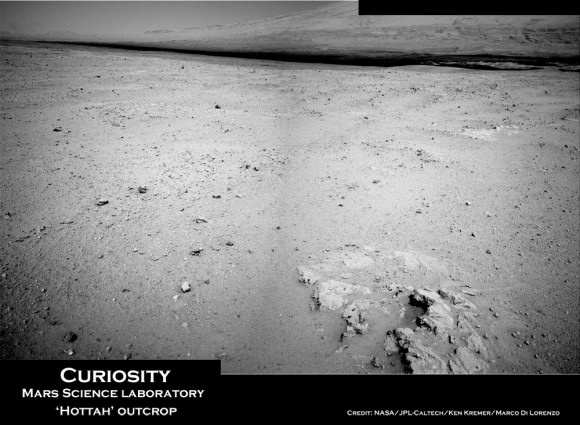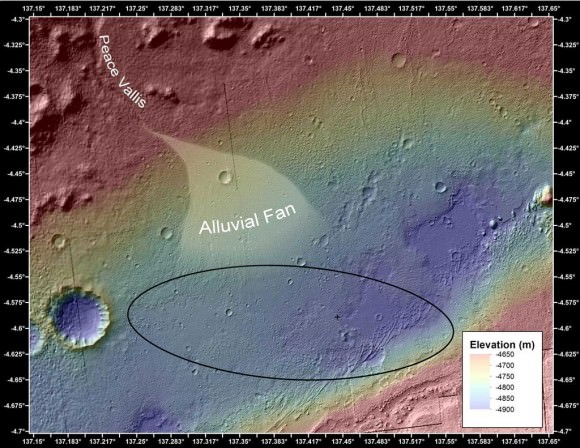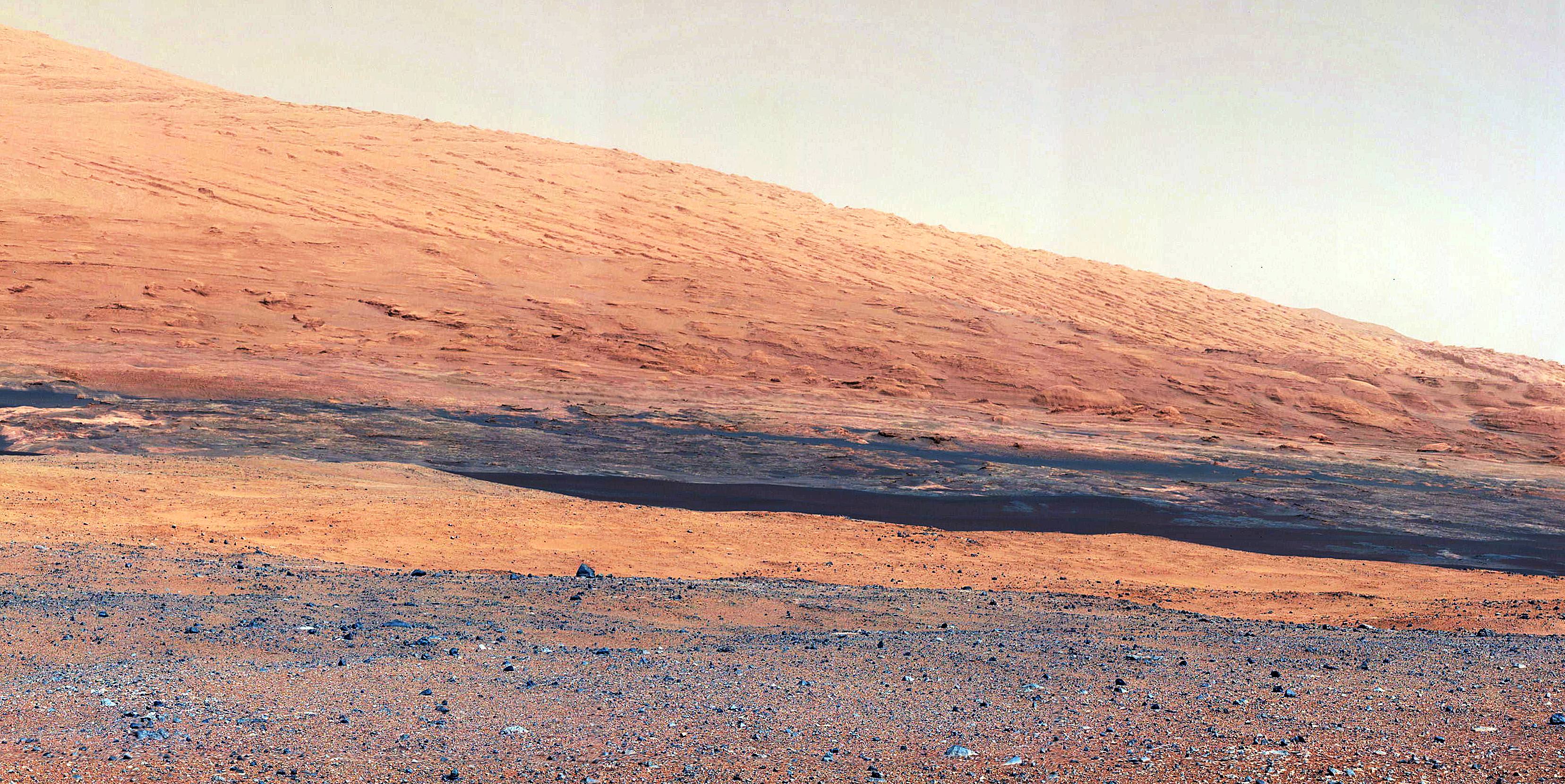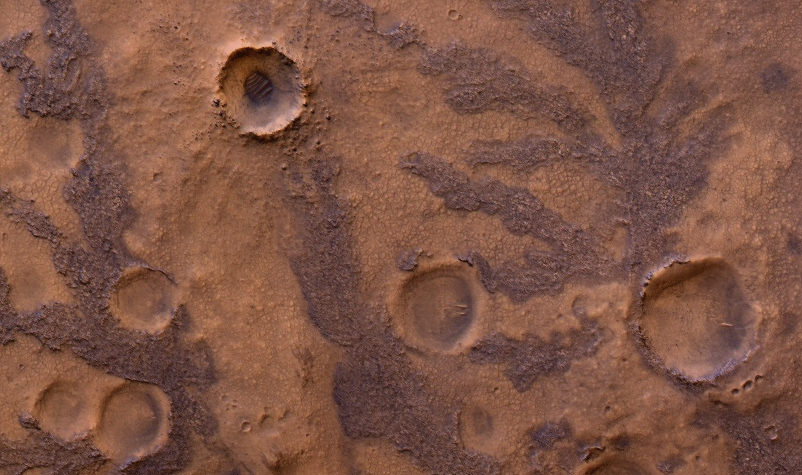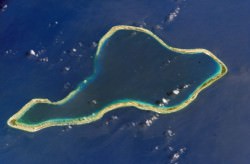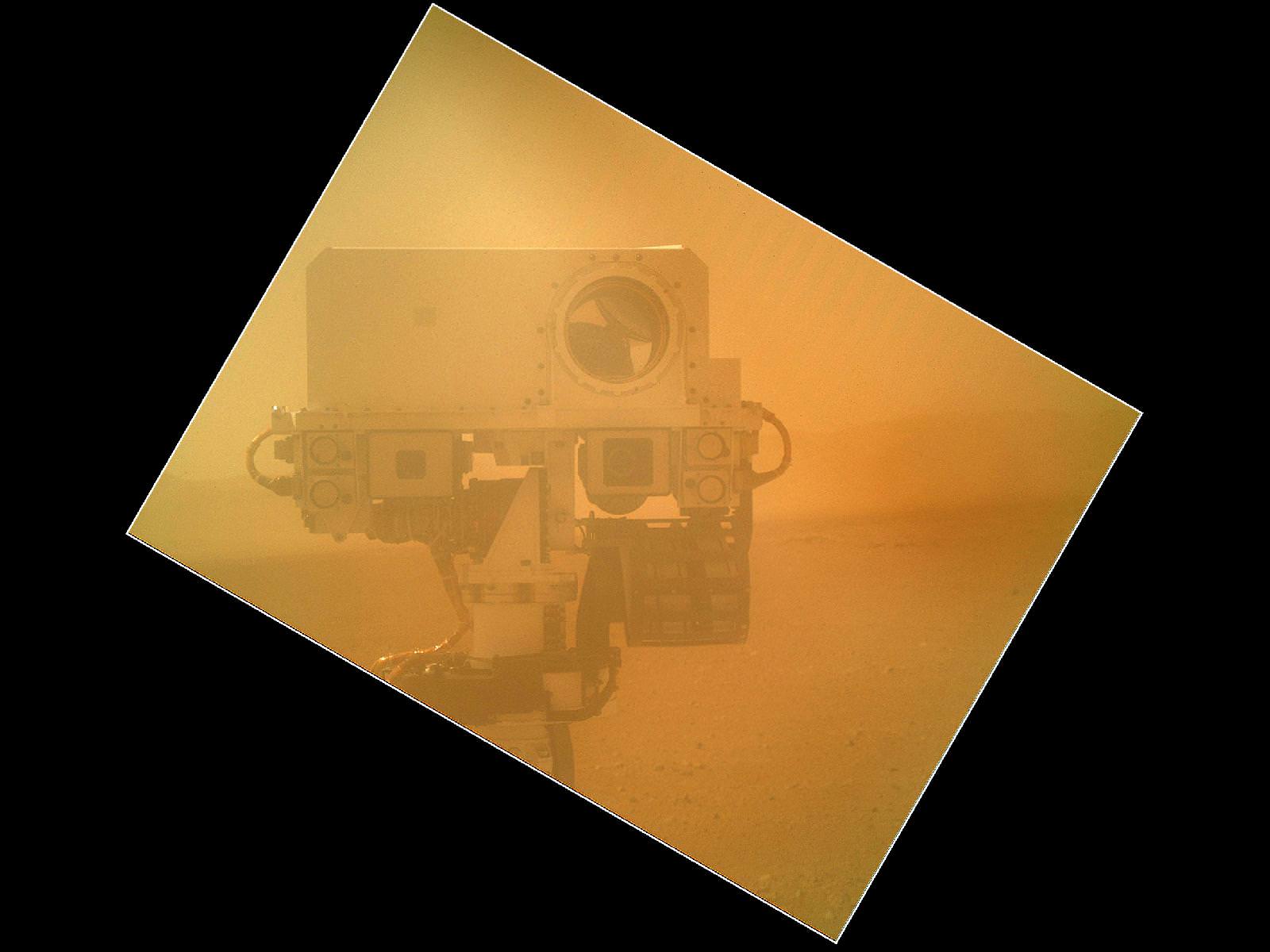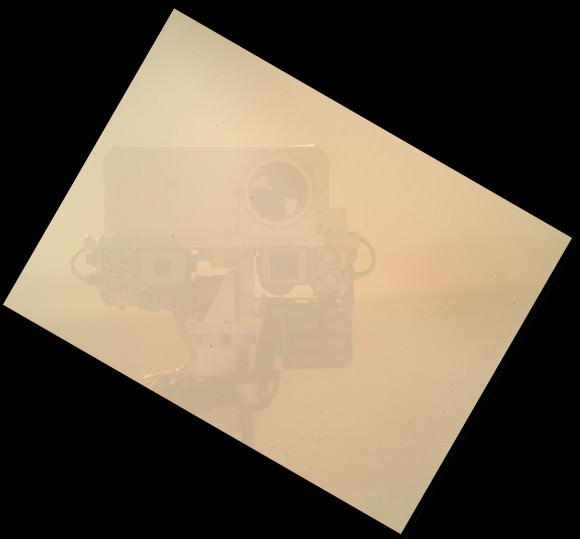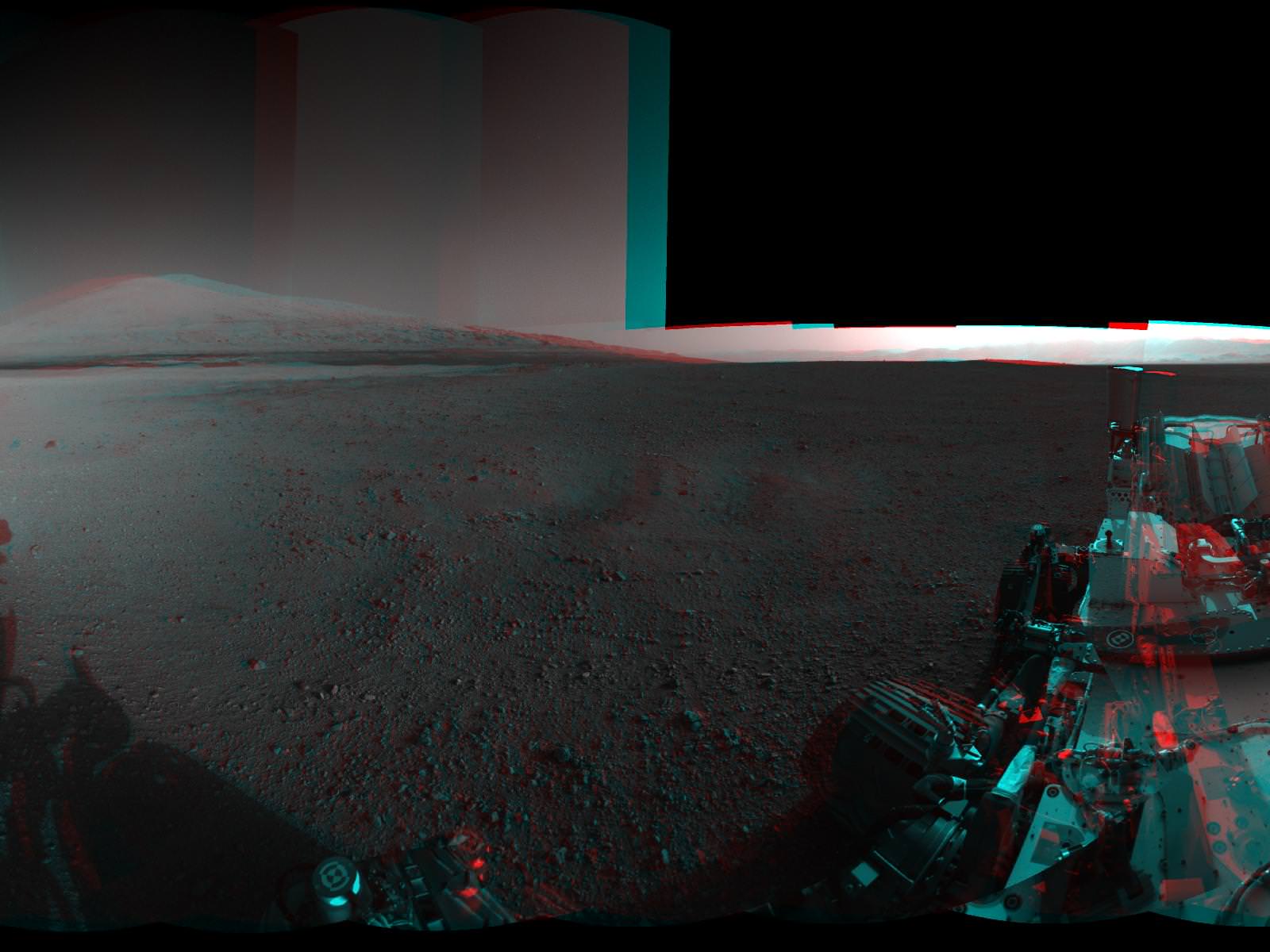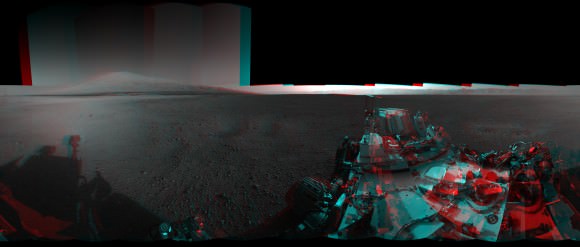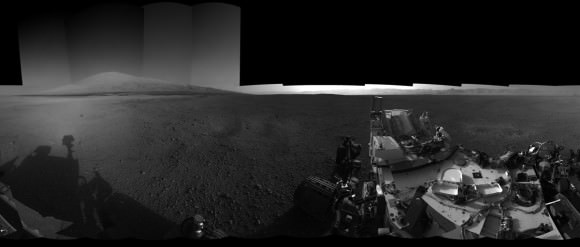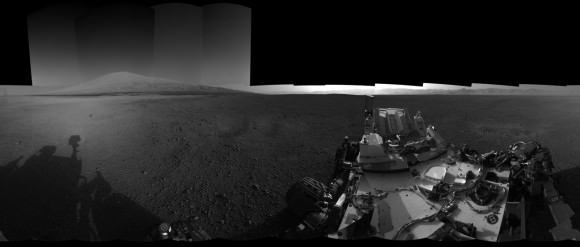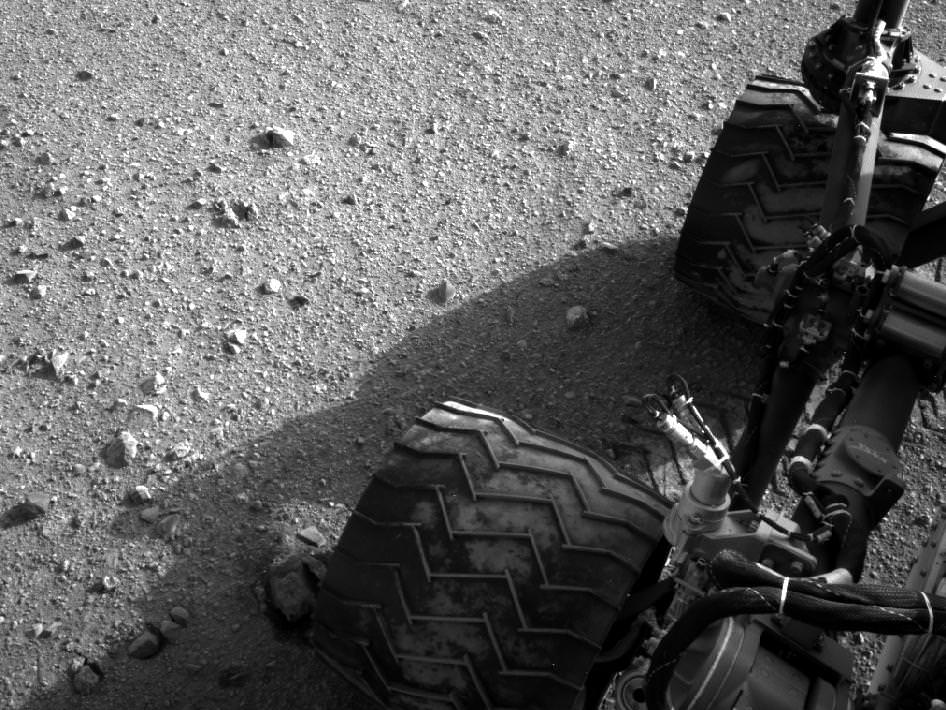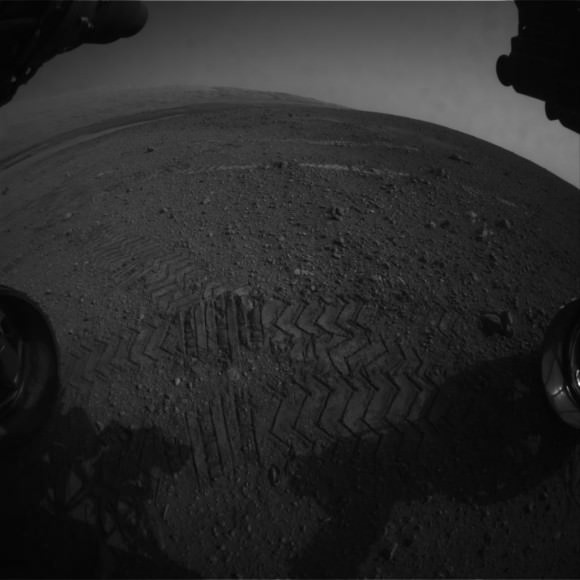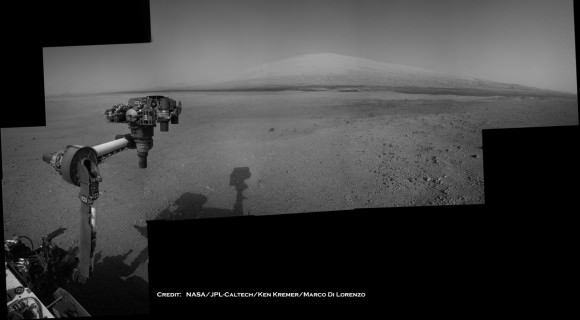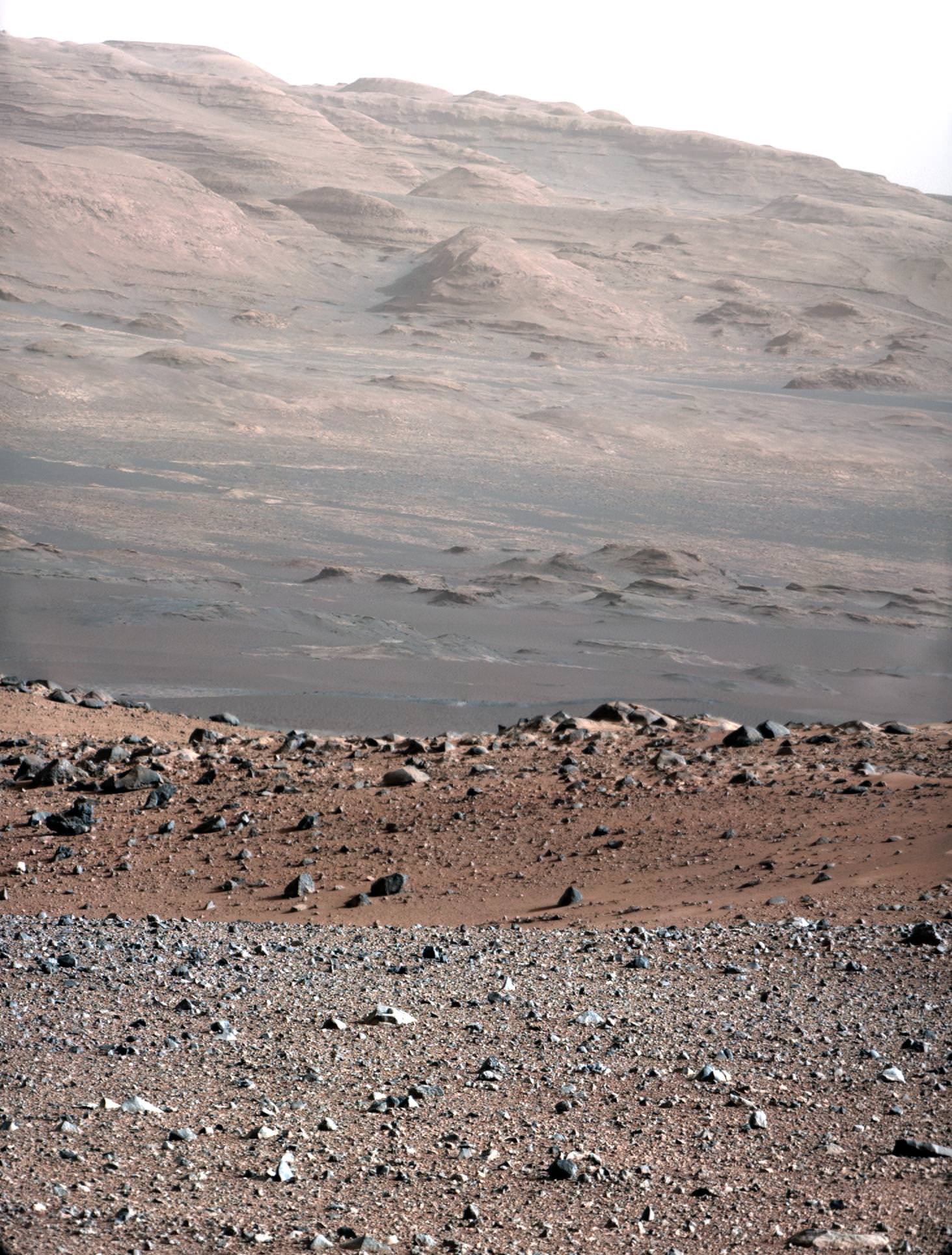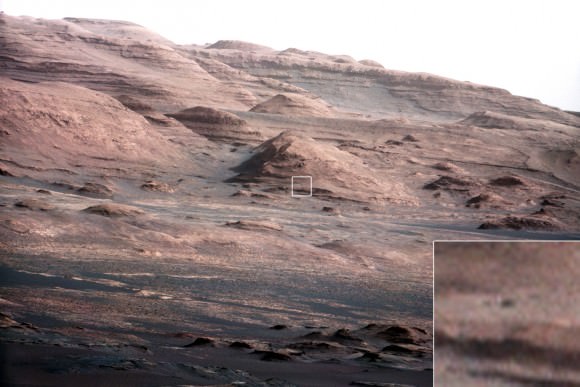Image caption: Time lapse context view of Curiosity maneuvering her robotic arm. Curiosity conducts a close- up examination of windblown ‘Rocknest’ ripple site and inspects sandy material at “bootlike” wheel scuff mark with the APXS (Alpha Particle X-Ray Spectrometer) and MAHLI (Mars Hand Lens Imager) instruments positioned on the rotatable turret at the arm’s terminus. Colorized mosaic was stitched together from Sol 57 & 58 Navcam raw images shows the arm in action just prior to 1st sample scooping here. Surrounding terrain and eroded rim of Gale Crater rim is visible on the horizon. Credit: NASA/JPL-Caltech/Ken Kremer/Marco Di Lorenzo
NASA’s Curiosity rover is actively searching for uncontaminated Martian soil after finding new flecks of “bright material” of unknown origin in the windblown sands at “Rocknest” ripple.
The team leading the Curiosity Mars Science Lab (MSL) mission decided to dump the second scoopful of dusty material collected last week on Sol 66 (Oct. 12). Instead they will search for pristine Martian sand to pour into the rover’s critical sample-processing mechanisms to use as a decontamination agent for cleansing the interior chambers and walls of Earthly residues.
Image Caption: Bright Particle of Martian Origin in Scoop Hole. This image contributed to an interpretation by NASA’s Mars rover Curiosity science team that some of the bright particles on the ground near the rover are native Martian material. Other light-toned material nearbyhas been assessed as small debris from the spacecraft. Curiosity’s Mars Hand Lens Imager (MAHLI) camera took this image on Sol 66 (Oct. 12, 2012) showing part of the hole or bite left in the ground when Curiosity collected its first scoop of Martian soil five sols earlier. A clod of soil near the top center of the image contains a light-toned particle. The observation that the particle is embedded in the clod led scientists to assess this particle as Martian material, not something from the spacecraft. This assessment prompted the mission to continue scooping in the area, despite observations of a few light-toned particles in the area being scooped. The image shows an area about 2 inches (5 centimeters) across. It is brightened to improve visibility in the shaded area. Credit: NASA/JPL-Caltech/MSSS
The science team is proceeding with appropriate caution – just as they indicated at press briefings – so as not to gum up the sample processing system with material that could give false positive readings for organic compounds or compromise the integrity of the rover’s delicate sample handling and delivery system.
“Concerns that the bright spot is more material shed from the flight system, and that some of this terrestrial material is in the scooped dirt, led the tactical team to decide to dump the scoop and take MAHLI images of the scoop targets first,” wrote MSL scientist Ken Herkenhoff in a rover team update.
The second scoopful of Martian sand from Rocknest was intentionally discarded on Sol 67 (Oct.13) after up close imaging by the MAHLI microscopic imaging camera revealed several specks of bright material that could be debris from the landing system or the rover itself or possibly even native Martian material.
The third test sample will be carefully analyzed by MAHLI, ChemCam and Mastcam and verified to be free of FOD before the team decides to pour the new processed sand into the processing system and eventually into the Sample Analysis at Mars (SAM) and Chemistry and Mineralogy (CheMin) analytical chemistry instruments on the rover deck.
Image Caption: Small Debris on the Ground Beside Curiosity – This image from the Mars Hand Lens Imager (MAHLI) camera on NASA’s Mars rover Curiosity shows a small bright object on the ground beside the rover at the “Rocknest” site about half an inch (1.3 centimeters) long. The rover team has assessed this object as debris from the spacecraft, possibly from the events of landing on Mars. The image was taken on Sol 65 (Oct. 11, 2012). Credit: NASA/JPL-Caltech/MSSS
Progress has been slowed somewhat by communications glitches with a radio transmitter at a Deep Space Network ground station and an unrelated new problem with NASA’s Mars Reconnaissance Orbiter (MRO) which went into “safe mode” on Sol 69. MRO serves as the highest volume communications relay for Curiosity’s images and scientific and engineering data.
Tosol is Sol 71 and Curiosity is now 10 weeks into her two year long mission to investigate whether Mars ever had conditions sufficient to sustain microbial life forms.
Curiosity made a pinpoint landing inside Gale Crater on Aug. 5/6, just a few miles away from her ultimate destination – the sedimentary lower layers of Mount Sharp holding deposits of hydrated minerals.
Video Caption: This 256 frame video clip shows the 1st sample of Martian material being vibrated inside Curiosity’s table spoon sized scoop on Oct. 7, 2012.

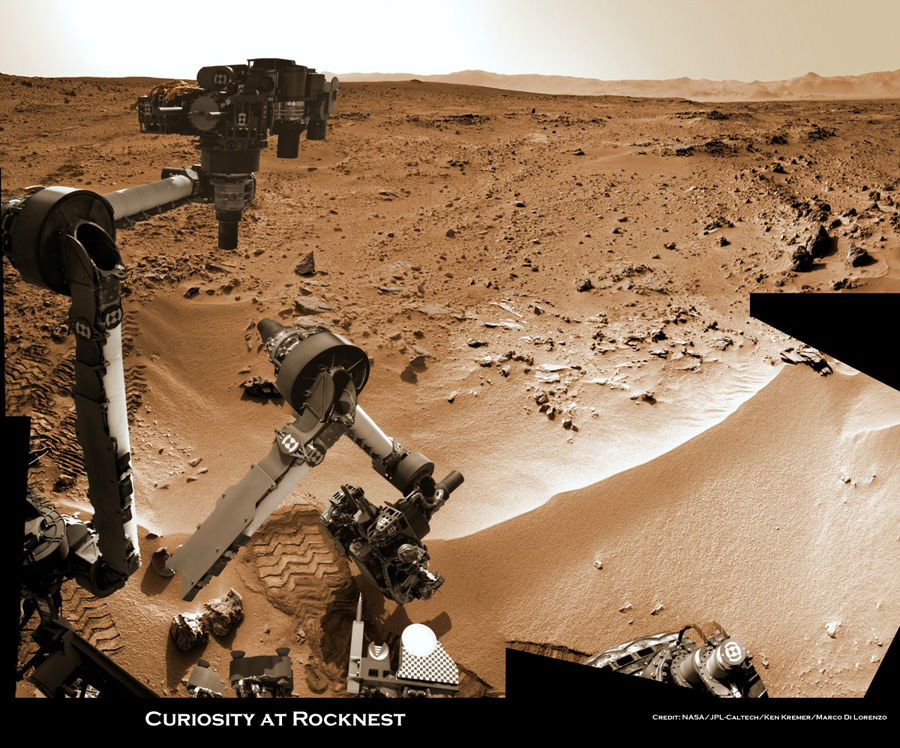
![697173main_pia16229-43_946-710[1]](https://www.universetoday.com/wp-content/uploads/2012/10/697173main_pia16229-43_946-7101-580x435.jpg)
![697185main_pia16230-43_946-710[1]](https://www.universetoday.com/wp-content/uploads/2012/10/697185main_pia16230-43_946-7101-580x435.jpg)
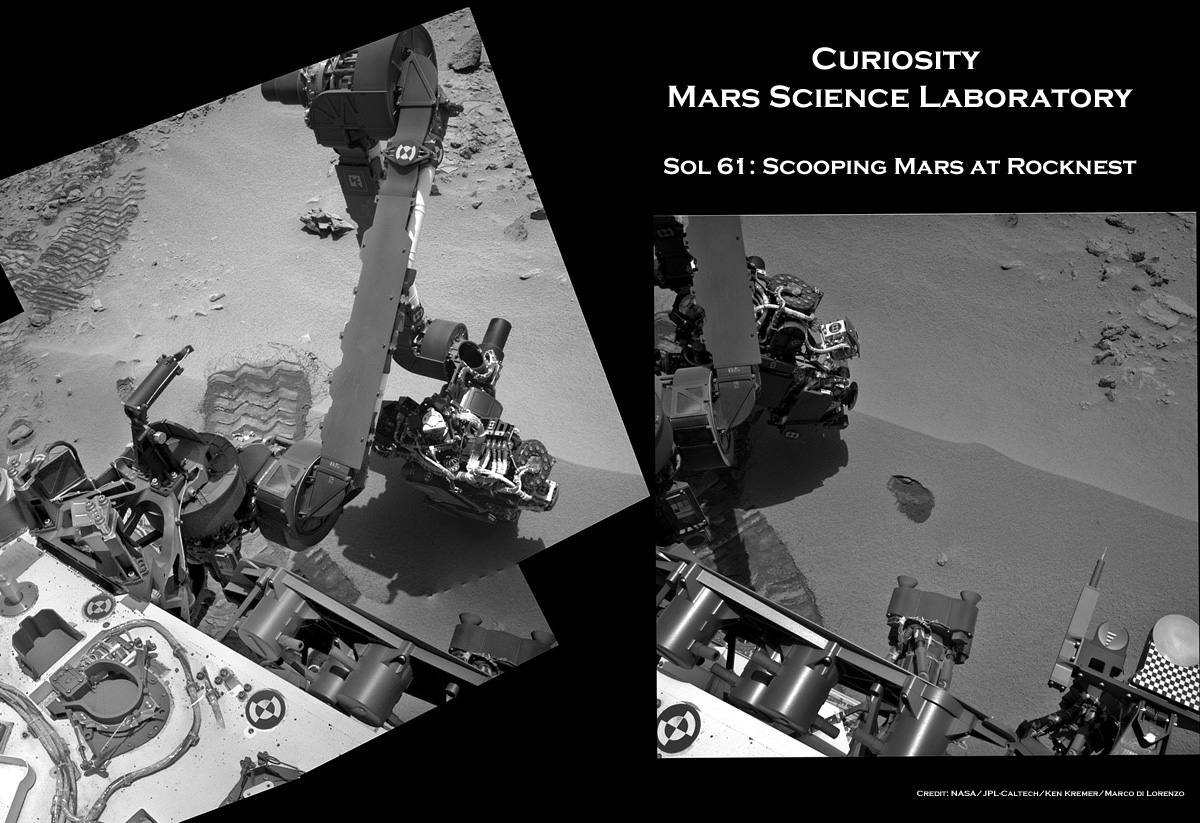
![NLA_402906079EDR_F0050104NCAM00326M_[1]](https://www.universetoday.com/wp-content/uploads/2012/10/NLA_402906079EDR_F0050104NCAM00326M_1-580x580.jpg)
![0061MR0319001000E1_DXXX[1]](https://www.universetoday.com/wp-content/uploads/2012/10/0061MR0319001000E1_DXXX11-580x435.jpg)
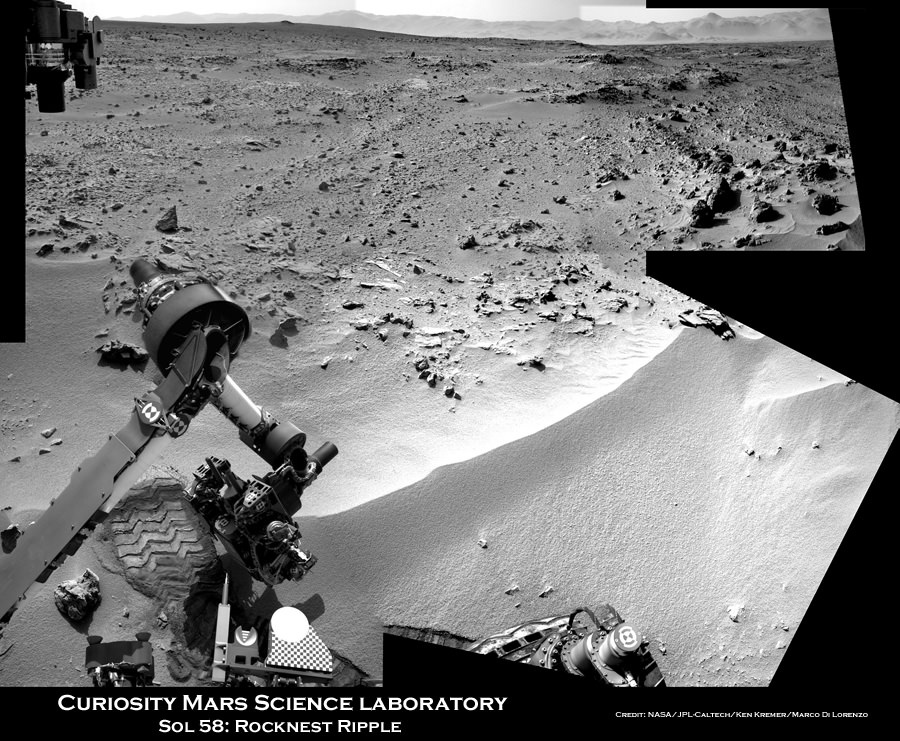
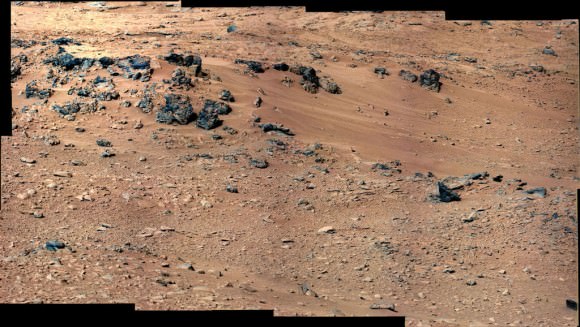
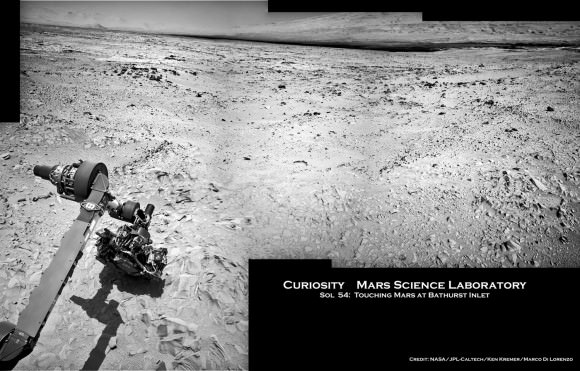
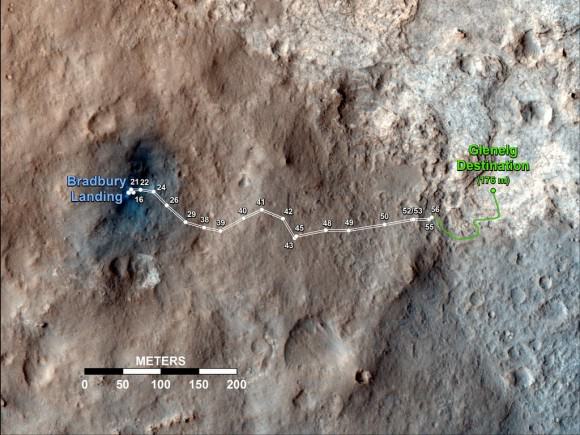

![692089main_Grotzinger-1-pia16156-43_800-600[1]](https://www.universetoday.com/wp-content/uploads/2012/09/692089main_Grotzinger-1-pia16156-43_800-6001-580x435.jpg)

